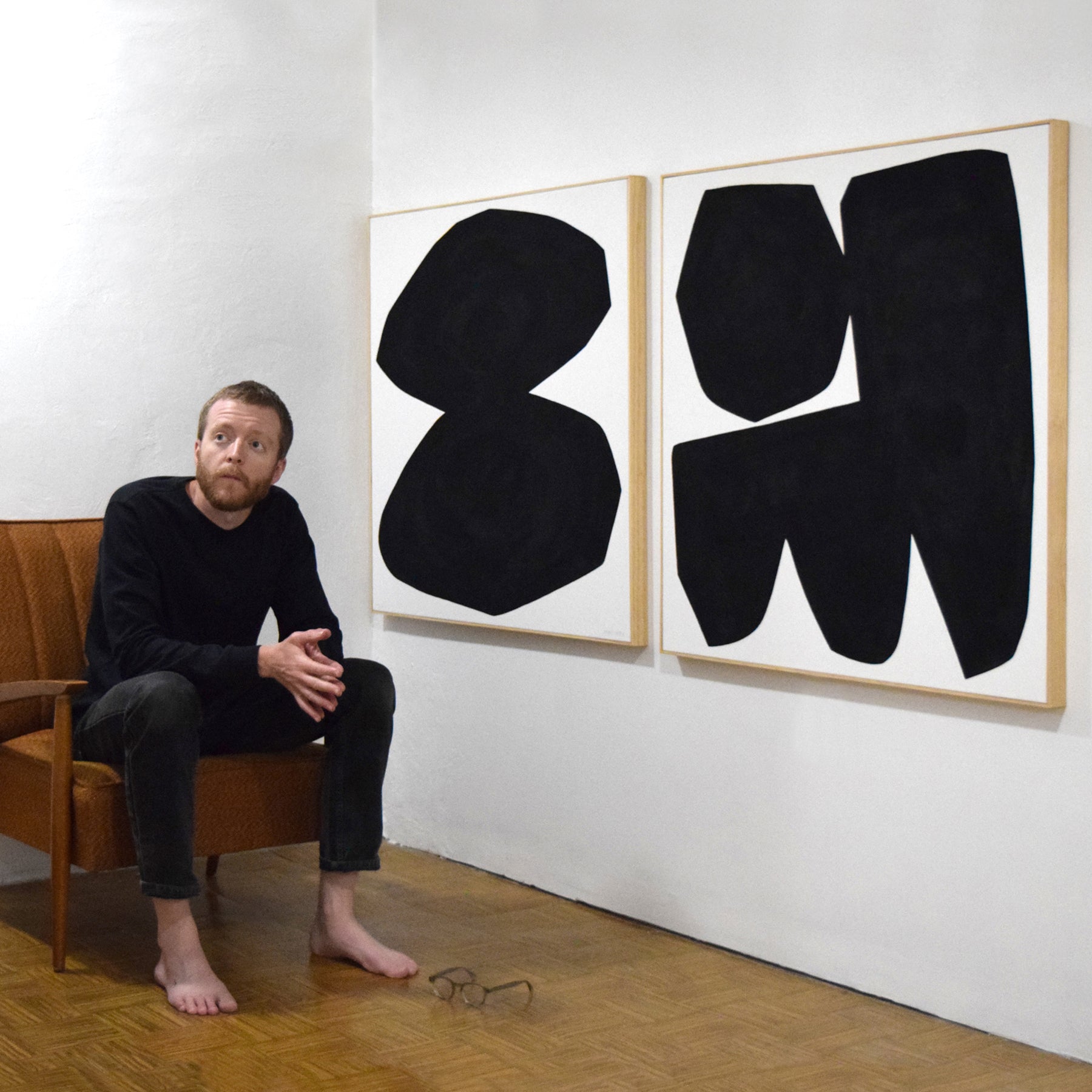Klavs Loris, born in 1988 in Riga, Latvia, is an artist who currently resides and works in his hometown. He graduated from the Painting Department at the Art Academy of Latvia. Klavs makes paintings and mixed media artworks, by experimenting with aleatoric processes, Loris formalizes the coincidental and emphasizes the conscious process of composition that is behind the seemingly random, his paintings feature simultaneous and unexpected connections which make it possible to revise art history and, even better, to complement it. Through his experimentation with materials, Klavs has developed his own unique technique, which integrates photography, digital printing, and classical painting. How did you get into art?
How did you get into art?
I got into art when I was very young, around 4 years old. Back then, my family didn't have much, and times were tough after the collapse of the Soviet Union. We lived in a small, one-room apartment. Despite the challenges, my father used to make miniature houses out of paper for us kids. Watching him create these tiny wonders fascinated me. It sparked a love for creating things with my hands.
As I grew older, I continued to explore different forms of art. I attended art school, initially focusing on sculpting, but later shifting to painting in art academy. Along the way, I also experimented with street art, photography, design, and music. However, I always found myself drawn back to painting. It's like those early experiences with my father's paper houses planted a seed of creativity in me that never stopped growing.
How would you describe your style? What makes your work special?
My style revolves around using dry textile pigments as the primary technique and material in my large-format paintings. These pigments, dating back to the Soviet era in Latvia, originate from textile and knitwear factories. The technique of using dry textile pigments was discovered by accident. I stumbled upon these pigments tucked away in my studio. One day, while varnishing a painting, a small amount of pigment spilled onto the canvas, resulting in a beautiful color structure. These pigments originally came from my former wife's mother, who obtained them during her days in the textile art department at The Art Academy of Latvia. She received them from her grandmother, who had worked in a textile factory during the Soviet era and had acquired them to support her granddaughter's studies. How do you go about developing your work?
How do you go about developing your work?
Painting, for me, is a continuous process of experimentation. I am fascinated by the technical and ideological coincidences that take over and guide my work. I also allow various external factors to influence my work, whether they are opinions, commentaries, available information, or even the social and political hustle and bustle. As a result, it becomes a sort of roleplay, where accidents, opinions, and my control over the painting fight for dominance. Usually, I like to work on multiple paintings at once. When working, I am continuously experimenting with numerous techniques and materials, such as oil, acrylic, floor varnish, carpet glue, glitter powders, and dry pigments. Who or what influences you?
Who or what influences you?
You know, it's pretty amazing how much inspiration we can find just by scrolling through Instagram or checking out online galleries. I'm constantly blown away by the talent out there! I find myself really influenced by other artists and their work. It's like we're living in this magical time where we have access to so much incredible art right at our fingertips. Seeing what others are creating really motivates me to keep pushing myself and exploring new ideas in my own work.
Apart from that, philosophy, historical processes, and the available literature also generate a big influence on my creative work. The visual and written heritage that is left to us, as well as transmitted values, affect me on a personal level. An essential part of the creative process is the text; keywords and concepts by philosophers and thinkers, and writings from different cultures around the world, serve as a 'backbone' for my paintings. It's from these foundations that the visual side of the work is derived later on. Make us curious. What are you planning to do next?
Make us curious. What are you planning to do next?
Currently, I am working on a new series of paintings that draw inspiration from ancient Latvian mythology and deities, reimagined in a modern context. It's all about bringing ancient Latvian mythology into the modern world - you know, giving those old gods a fresh spin. Plus, I'm diving deep into Latvian history and digging into some old books to really get the vibe right. Learn more about the artist:
Learn more about the artist:




